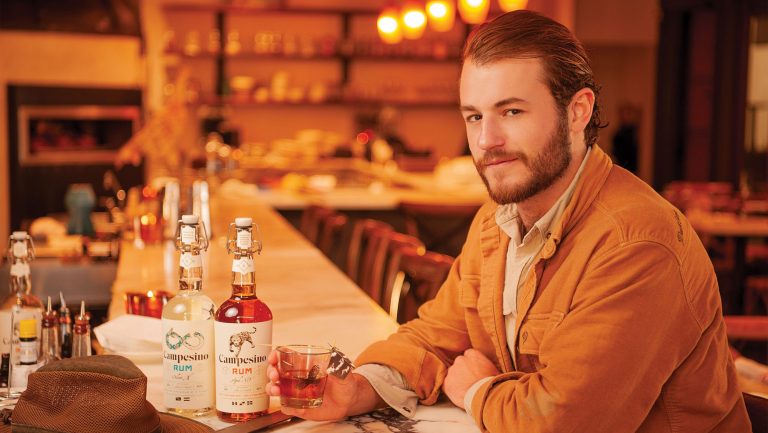At the first annual Bar Convent Brooklyn, a two-day international trade event for the drinks industry last week, Julie Reiner and Susan Fedroff—founders of the Flatiron Lounge and co-owners of Clover Club in New York City—and their partner, Christine Williams, with whom they opened the pan-Latin cocktail bar and restaurant Leyenda, participated in a panel discussion: “From Partnerships to Profits and Everything in Between.” The panel addressed strategies on how to open a new bar and make it a success. Here, SevenFifty Daily synthesizes the key points of the discussion into nine tactical tips gleaned from the three entrepreneurs.
1. Choose partners wisely.
Reiner advocates that you choose partners with diverse talents—who bring skills and expertise to the table beyond what you yourself have to offer. “A lot of bartenders want to partner with friends,” she says. “That’s the worst idea ever. Open with people who know the aspects of the business that you do not.” In her own partnership, for example, Reiner—the legendary bartender renowned for elevating New York City’s cocktail scene—has always brought the vision and the talent, while Fedroff, with an MBA in finance, has the business mind-set and Williams brings the background in food. In addition to attracting partners with diverse talents, Williams adds that it’s important to identify exactly what those talents are so they can be used strategically.
2. Draw up contracts, even if you’re working with friends.
Every angle of the business should be hammered out ahead of time and then signed off on, Fedroff says. While it may not be comfortable to have such conversations, it’s essential that investors and partners—or potential partners—engage in them early on. Says Fedroff, “Christine and I went to our attorney’s office and said, ‘We want you to draft an agreement as if we’re going to hate each other in five years.’ You certainly hope that won’t be the case, but you have to protect yourselves.”

Don’t miss the latest drinks industry news and insights. Sign up for our award-winning newsletters and get insider intel, resources, and trends delivered to your inbox every week.
3. Create a business plan.
Fedroff emphasizes that a written business plan is essential and points out that templates can easily be downloaded from the Internet. Business plans, she says, are important because they serve as the pitch—the opportunity to sell the idea and explain why it’s going to work, why the market is telling you it’s going to work, why the location is brilliant, and who your team is. You’re selling the whole package. Writing a business plan with your partners is also a good way to ensure that everyone is on the same page with the concept.
4. Itemize your expenses, and write them into the plan.
Researching to get a strong sense of what your actual expenses will be is also important. Expenses will include everything from labor to cost of goods says Williams. Additionally, you should factor in potential rent increases, water bill hikes, and any other foreseeable future expenses.
When done correctly, a business and financial plan can serve as a tool for success. “This will be your menu that you can go back to time and again,” says Fedroff. “If you’re not making your numbers, you can go back to the plan to figure out why, and where, you’re missing projections.”
Early on for their various businesses, Reiner, Fedroff, and Williams do month-at-a-glance financial projections, which sometimes fluctuate a bit, depending on the season. Then, when they look at their monthly profit-and-loss statements, they identify any problem areas, measure those against the projections, and respond rapidly to make changes that can be effective in as little as two weeks. For example, when one of their bars wasn’t hitting its numbers at happy hour, they compared the P&L with the monthly projection and were able to see that the problem wasn’t customer numbers but rather staffing: They didn’t have enough staff to serve enough cocktails. Within two weeks, they’d addressed the problem and were back to hitting the profits they’d projected.
The partners keep those monthly financial projections in place for at least the first two to four years, but eventually they can move to annual projections and even 5- to 10-year projections to evaluate the well-being of their venues. “You might not have the opening expenses five years down the road,” says Williams, “but you will have repair and replacement expenses then.”
5. Know what you’re signing up for when you seek funding.
While it’s convenient when founders can invest their own money in a bar startup, that’s often not the way it works—especially on first projects. The more likely scenario is that founders get a sweat-equity deal. This kind of deal can help you get your bar off the ground with great results, say the partners, but it’s critical to have discussions about roles and payouts first, and to be realistic about what you’re getting into. “Don’t buy yourself a shitty job for 6 percent of the business, where you’re not going to see any real money for six or seven years,” says Fedroff, “and where you don’t have any real voting interest in the business to control that. You’ve got to watch the sweat-equity deals and what you’re signing yourself on for.”
6. Request an out clause and a long-term lease.
When signing a lease, always ask for an out clause so you’re not penalized if, for example, you can’t get a liquor license. Most landlords know that in order to get a liquor license a new bar needs a lease, and yet that new bar also needs a liquor license to open in the landlord’s space. Still, say the partners, no landlord is going to propose a clause in the lease that allows for cancellation, within a set period of time, if the business is unable to obtain an element, such as a liquor license, that’s critical to opening the business. It’s up to founders to request an out clause in their lease. Williams also urges founders to look at the third page of the lease, where rent increases are typically spelled out, and incorporate that information into the business plan.
Fedroff also feels strongly that founders should not sign a lease for a term that’s less than 10 years. “I think businesses need time to grow,” she says. “At five to seven years, you’re just hitting your stride and then your lease is done.” At that point, the landlord could double the rent, which would eat up any profits.
7. Make a plan for repaying investors.
So when can a bar expect the money to start coming in? Fedroff responds, jokingly, “Any day now … Any day …” But seriously, the partners go on to say that when their businesses do start turning a profit, they cut dividend checks. They also reimburse investors through an accelerated payback structure, in which the investors are remunerated at a rate higher than their amount of equity ownership until their investment is fully repaid.
Any additional profits are reinvested in supplies, remodels, equipment repairs, and more, says Williams. It’s only after investors have been repaid that she, Reiner, and Fedroff start paying themselves back.
8. Know that even when the business can run itself, it cannot run itself.
It’s a good idea for one of the owners to be on-site at the venue regularly. “Some of the places I’ve seen fail,” says Williams, “are those where the owners have no idea what’s going on in their bar. You don’t have to be there every day, but you do have to be there.”
That doesn’t mean imbibing at the bar or barking orders, they add. “Clover is as successful as it is,” says Reiner, “because we’re there nonstop.” Williams points out that when she’s on-site, she’s ready to jump behind the bar and make drinks, wait tables, and even plunge a toilet. “The more you know how to do,” she says, “the less money you pay out for others to do it.”
9. When it comes to hiring, look for passion—and for outside professionals.
Reiner and Fedroff point out that early in their partnership, there was no talent pool to choose from. “We had to hire good people and invest in them, and train them,” says Reiner. “If you’re coming from a smaller market, you may have to do this. The upside is, you create loyalty this way. Beyond that, I look for people with passion. That thing you can’t teach. Those are the people who you hire.”
Reiner also explains that the staff trainings at her businesses have also evolved over years. “We have some people on staff who are great trainers,” she says. “Some who are great bartenders but not great trainers. Back in the day, it was a longer process. You hired someone as a barback and eventually trained them to be a bartender.” These days, the training is streamlined.
Finally, Fedroff encourages hiring outside help early. “Hire a really good attorney and a really good accountant,” she says. “And do that from day one.”

Dispatch
Sign up for our award-winning newsletter
Don’t miss the latest drinks industry news and insights—delivered to your inbox every week.
When she’s not writing about beverage, travel, or weird science, Julie H. Case can be found deep in America’s forests, foraging for mushrooms.







